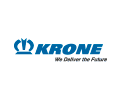Achieving a healthy work-life balance has become a cornerstone of employee satisfaction and well-being. As the boundaries between work and personal life blur in today’s fast-paced world, organisations must prioritise tools and policies that empower employees to take time off when needed. Transparent leave tracking solutions play a crucial role in promoting balance, helping employees feel valued and supported.

change
Tools like an employee vacation tracker provide businesses with an efficient way to manage leave while fostering transparency and fairness. By streamlining leave processes and ensuring accountability, these solutions contribute to a positive workplace culture where work-life balance thrives.
Why Work-Life Balance Matters
Work-life balance is not just a buzzword—it’s a critical factor in employee happiness and productivity. A balanced approach to work and personal life allows employees to recharge, pursue hobbies, spend time with loved ones, and maintain their mental health. When businesses prioritise this balance, the benefits are tangible:
- Increased Productivity: Rested employees are more focused, creative, and efficient at work.
- Reduced Burnout: Encouraging time off prevents exhaustion and improves long-term performance.
- Higher Retention: Employees who feel supported in managing their personal lives are more likely to stay with their employer.
- Improved Morale: A culture that values balance fosters a sense of trust and respect, boosting team morale.
However, achieving these benefits requires more than encouragement—it demands practical systems that enable employees to plan and take leave easily.
The Challenges of Leave Management
Despite the importance of taking time off, many employees struggle to utilise their leave entitlement. Common barriers include:
- Lack of Transparency: Without clear visibility into leave policies or team schedules, employees may hesitate to request time off, fearing it will inconvenience others.
- Complex Approval Processes: Lengthy or unclear approval workflows can discourage employees from taking leave.
- Scheduling Conflicts: Poor visibility into team availability can lead to overlapping absences, leaving critical tasks uncovered.
- Untracked Leave Balances: Employees may be unaware of their remaining leave entitlement, leading to unused holiday days or last-minute rushes.
These issues often stem from outdated or manual leave tracking methods, which lack the efficiency and clarity needed in modern workplaces.
How Transparent Leave Tracking Solutions Help
Digital leave tracking solutions address these challenges by offering a streamlined, transparent approach to managing employee time off. An employee vacation tracker simplifies the process for both employees and managers, ensuring everyone has the information they need at their fingertips.
Clear Visibility into Leave Balances
One of the key benefits of a leave tracking solution is the ability for employees to view their remaining leave entitlement at any time. This transparency empowers them to plan their holidays with confidence, ensuring they use their leave effectively.
Simplified Leave Requests
A user-friendly digital system allows employees to request leave with just a few clicks, eliminating the hassle of paper forms or lengthy email chains. Managers can review and approve requests quickly, keeping the process smooth and efficient.
Team-Wide Transparency
Transparent leave tracking solutions often include team calendars that display who is off and when. This visibility helps employees plan their leave around colleagues’ schedules, reducing the likelihood of conflicts and ensuring adequate coverage for ongoing tasks.
Automated Workflows
Digital systems automate leave approval workflows, saving time for managers and HR teams. Notifications keep everyone informed, reducing delays and improving accountability.
Data-Driven Insights
Modern leave tracking tools provide valuable insights into absence patterns and leave usage. These reports help organisations identify trends, such as high absence rates during certain periods, and adjust policies or staffing plans accordingly.
The Role of Transparency in Work-Life Balance
Transparency is a critical component of fostering work-life balance. When employees feel confident that their leave requests will be handled fairly and efficiently, they are more likely to take the time off they need. Transparent systems also eliminate ambiguity, ensuring that everyone understands the rules and processes around leave management.
In addition, visibility into team schedules promotes fairness. Employees can see when their colleagues are taking leave and plan accordingly, reducing the risk of overlapping absences. This clarity fosters a culture of collaboration and mutual respect, where team members support each other in maintaining balance.
Best Practices for Implementing Leave Tracking Solutions
Adopting a leave tracking solution is a step in the right direction, but successful implementation requires thoughtful planning. Here are some best practices to maximise the benefits of your chosen system:
1. Communicate Clearly
Introduce the leave tracking tool with clear communication about its features, benefits, and how it will work. Ensure employees understand how to use the system and where to find support if needed.
2. Customise to Your Needs
Tailor the system to reflect your organisation’s leave policies, such as holiday entitlement, carry-over rules, and notice periods. Customisation ensures the tool aligns with your specific requirements.
3. Encourage Advance Planning
Promote a culture of advance planning by encouraging employees to book their leave early. This helps managers allocate resources effectively and reduces last-minute conflicts.
4. Monitor and Adjust
Use the insights provided by the system to monitor leave trends and address any issues. For example, if employees are not taking their full entitlement, consider initiatives to encourage time off.
5. Provide Training and Support
Offer training sessions or resources to help employees and managers make the most of the tool. Ongoing support ensures that the system is used effectively.
The Benefits for Businesses and Employees
A transparent leave tracking solution benefits both businesses and their employees. For organisations, streamlined leave management reduces administrative workloads, improves resource allocation, and ensures compliance with leave policies. Managers gain a clear overview of team availability, enabling them to plan projects more effectively and avoid disruptions.
For employees, the simplicity and clarity of a digital system enhance their experience. They can request leave confidently, knowing the process is fair and efficient. Access to their leave balances ensures they use their entitlement, contributing to better work-life balance and overall well-being.
Conclusion
Supporting work-life balance is a shared responsibility between employers and employees. Transparent leave tracking solutions, such as an employee vacation tracker, provide the tools needed to make this balance achievable. By simplifying leave management, fostering transparency, and encouraging fair practices, these tools create a workplace culture where employees feel valued and empowered to take the time off they need.
For businesses, the benefits go beyond happy employees. Improved morale, reduced burnout, and higher productivity are just some of the rewards of investing in systems that prioritise work-life balance. In the digital age, a transparent and efficient approach to leave management is no longer a luxury—it’s a necessity.


.gif?rand=9420)








